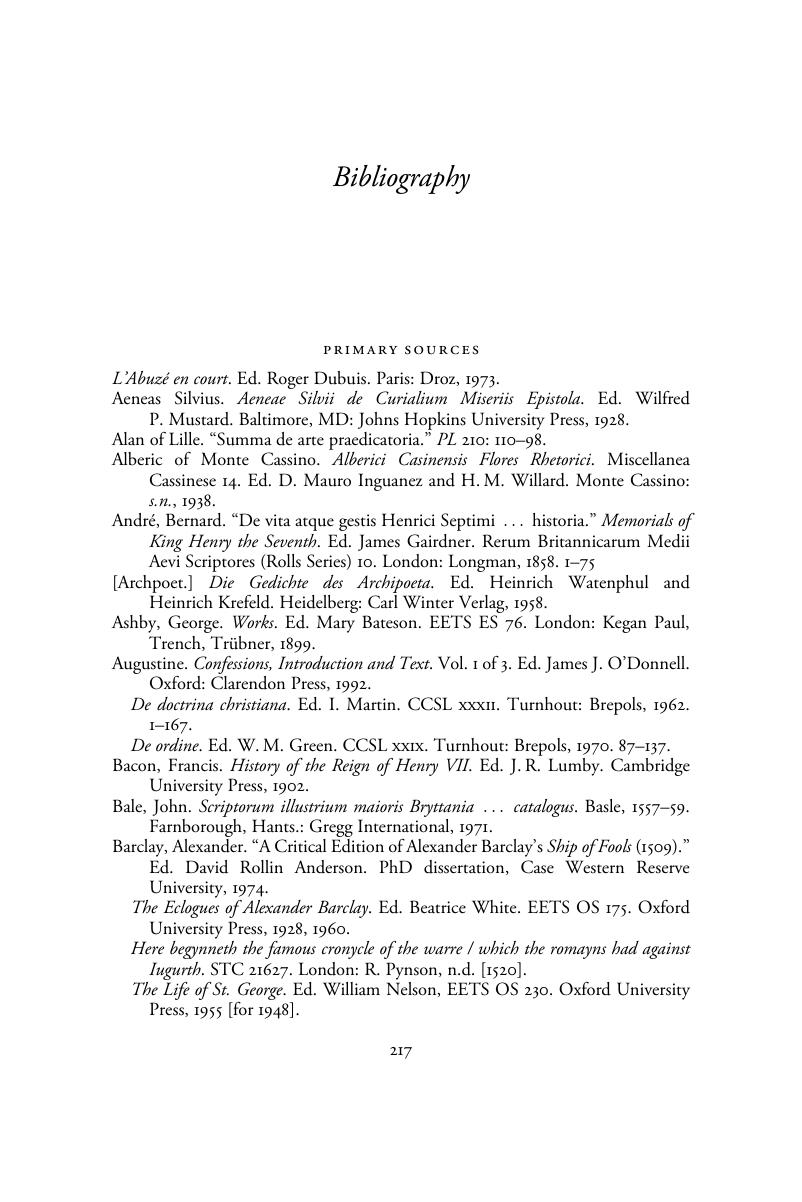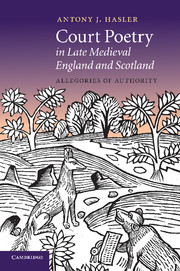Book contents
- Frontmatter
- Contents
- Acknowledgements
- Abbreviations
- Introduction
- 1 Beginnings: André's Vita Henrici Septimi and Dunbar's aureate allegories
- 2 The Bowge of Courte and the birth of the paranoid subject
- 3 “My panefull purs so priclis me”: the rhetoric of the self in Dunbar's petitionary poems
- 4 Translative senses: Alexander Barclay's Eclogues and Gavin Douglas's Palice of Honour
- 5 Mémoires d'outre-tombe: love, rhetoric and the poems of Stephen Hawes
- 6 Mapping Skelton: “Esebon, Marybon, Wheston next Barnet”
- Conclusion
- Notes
- Bibliography
- Index
- CAMBRIDGE STUDIES IN MEDIEVAL LITERATURE
- References
Bibliography
Published online by Cambridge University Press: 04 April 2011
- Frontmatter
- Contents
- Acknowledgements
- Abbreviations
- Introduction
- 1 Beginnings: André's Vita Henrici Septimi and Dunbar's aureate allegories
- 2 The Bowge of Courte and the birth of the paranoid subject
- 3 “My panefull purs so priclis me”: the rhetoric of the self in Dunbar's petitionary poems
- 4 Translative senses: Alexander Barclay's Eclogues and Gavin Douglas's Palice of Honour
- 5 Mémoires d'outre-tombe: love, rhetoric and the poems of Stephen Hawes
- 6 Mapping Skelton: “Esebon, Marybon, Wheston next Barnet”
- Conclusion
- Notes
- Bibliography
- Index
- CAMBRIDGE STUDIES IN MEDIEVAL LITERATURE
- References
Summary

- Type
- Chapter
- Information
- Court Poetry in Late Medieval England and ScotlandAllegories of Authority, pp. 217 - 242Publisher: Cambridge University PressPrint publication year: 2011



